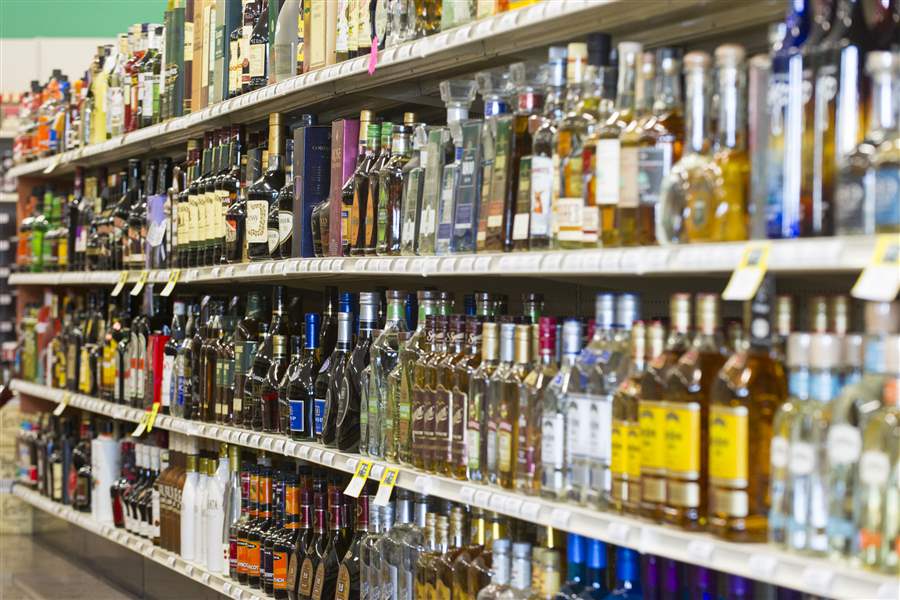
Will changing how bottles are displayed boost Ohio liquor sales?
10/3/2017
Shelves are filled with bottles of liquor at a 21st Amendment liquor store.
ASSOCIATED PRESS
COLUMBUS — Ohio’s Division of Liquor Control is giving thought to how it sells alcohol.
At six stores in the state, the division is rearranging the merchandise and moving inventory to better group items, help consumers find interesting brands and possibly try new drinks or spirits.
The effort is also aimed at ridding the system of slow-moving inventory to increase the focus on popular products.
The test program will last three months and, if successful, will be used in all 465 state liquor stores.
“I heard a lot of constructive criticism that there wasn’t much thoughtfulness put into a store’s presentation of products,” said liquor superintendent Jim Canepa. “A wine shop is very organized, but if you look at the liquor store, it looks like a warehouse.”
Mr. Canepa, who took over the division this year, reached out to agency owners, suppliers and distributors to find out what works in other states and at stores in the industry that perform well. He found out that Ohio had a lot of work to do.
The agency has never approached retail locations with an eye to making them more appealing to consumers. After all, the stores bring in more than $1 billion in revenue a year without much effort.
A more-conducive layout — with Irish whiskeys together, and Scotch sorted by region, plus more identification of local products such as bottles of Watershed and Middle West — is just common sense, in one local observer’s view.
“(It’s) a lot like Retail 101,” said Chris Boring, a local retail expert.
“It is about time,” he said of the liquor-store test. “They need to apply some fundamental merchandising techniques, and I think sales will increase. ... There is no reason that liquor stores need to be so boring.”
Workers spent hours at the Giant Eagle in Lewis Center, Ohio on Monday taking down and regrouping the store’s 1,800 individual items for sale. The actual inventory is many times that, as there are usually several bottles of each item in stock.
Part of the retail “reset” comes thanks to a new liquor-management software system and supply chain that Mr. Canepa said better tracks sales and inventory and gives the division heaps of data that can be used to tailor selections to a store’s customer base. Stores in a particular region or neighborhood should carry what their clientele wants, he said.